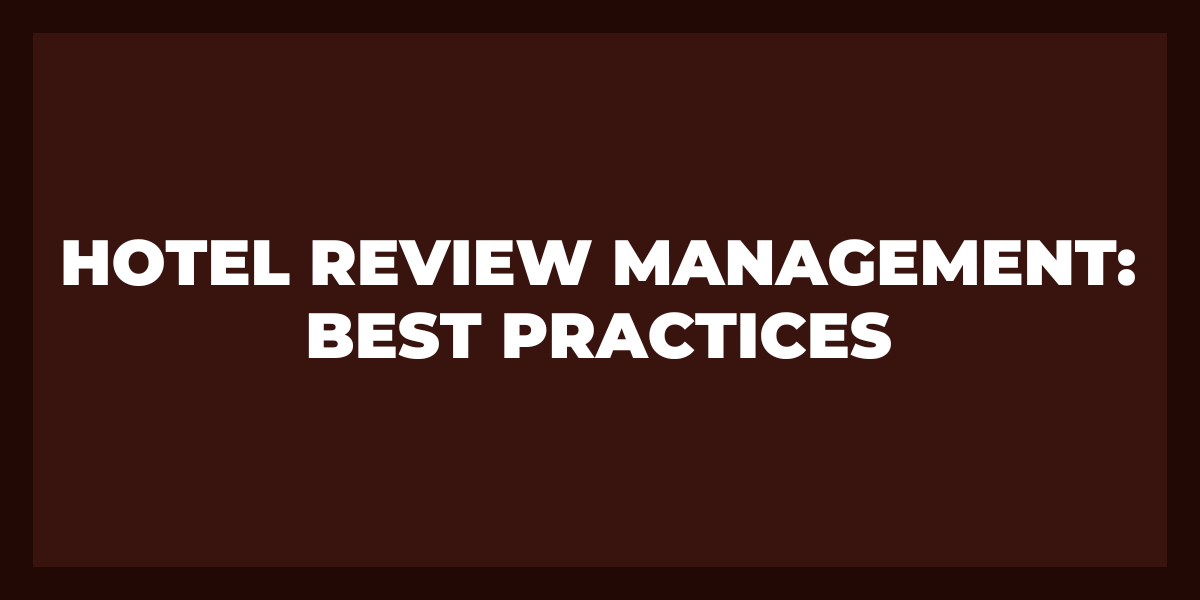Subject lines are the first thing your recipients see in their inboxes, so it’s essential to ensure yours are adequate to encourage people to open your emails. While there’s no perfect formula for crafting the perfect subject line, there are a few things you can keep in mind to improve your chances of success.
Here are a few tips for writing effective email subject lines:
1. Keep it short and sweet – people are more likely to open an email with a fast, straightforward subject line.
2. Use keywords wisely – choose words that accurately reflect the contents of your email, so people know what they’ll get when they open it.
3. Be personal – using the recipient’s name in the email subject line can help your email stand out in a crowded inbox.
4. Create a sense of urgency – let people know that your email contains time-sensitive information to encourage them to open it immediately.
5. Use emojis – a well-placed emoji can add personality to your email subject line and make it more eye-catching.
Following these tips can improve your chances of getting recipients to open your emails. Remember to test different review request subject lines to see what works best for your audience.
What should I title an email for review?
Before we dive into titling your email for review, let’s first understand the basics of email etiquette. In general, it is considered good manners to:
- Use a clear and concise subject line
- Address the recipient by customer name
- Be polite and professional in your language
- Use proper grammar and punctuation
- Keep your message short and to the point
Now that we’ve covered some email etiquette basics let’s talk about how to title your email for review. When sending an email for someone to review, it’s essential to be clear about what you’re asking for. A good email subject line will help the recipient understand what you need and take action accordingly.
Here are a few examples of the best subject lines for an email asking for a review:
– “Can you please review my paper?”
– “Would you be able to provide feedback on my presentation?”
– “I’d appreciate your thoughts on my latest project proposal.”
As you can see, each of these review request subject lines is specific and clear. The recipient knows exactly what they need to do, and there is no confusion about the request.
When titling your email for review, be specific and clear about what you need. This will help the recipient understand your request and take action accordingly.
How do you ask for a subject in an email review?
One of the most important things to remember when writing an email is to ask for a subject. Your email will likely be ignored or sent to spam without an issue.
Asking for a subject shows that you are willing to communicate and helps the recipient understand the email. It also allows you to get straight to the point without wasting time.
When asking for a subject, be specific and to the point. For example, “Can you review my paper on the effects of climate change?” is much better than “Hi, can you help me?”
If unsure what to write, consider using a template or guide from online resources or books. There are many available for different situations.
With a little effort, you can ensure that your review request emails are well-received and responded to promptly.
What Makes a Review Request Subject Line Awesome?
When sending review requests, the email subject line is your opportunity to make a great first impression. It’s also your chance to ensure that your email gets read.
Here are a few tips for writing an excellent review request subject line:
Keep it short and sweet
It should be short and to the point. Avoid using unnecessarily long or complicated words.
Be specific
Be specific about what you’re asking for in your subject line. For example, “Can you please review my new article?” is more likely to get opened and read than “Can you take a look at this?”
Use keywords
Include keywords that will help get your email noticed. For example, if you’re writing about travel, you might use the word “travel” in your subject line.
Personalize it
Personalize by including the customer name of the recipient or something specific to them. For example, “I noticed you’re a travel fan too!”
Make it benefit-focused
Your email subject line should focus on the benefit to the recipient. For example, “You’ll be the first to know about my new travel book!”
What should I write about in an email?
When emailing someone, thinking about what you will write before you start typing is essential. This will help ensure that your email is clear, concise, and easy to read. Here are a few things to consider when deciding what to write in an email:
Who is your audience?
Email can be a great way to communicate with friends, family, and colleagues. But it’s essential to think about who you are emailing before typing. Are you emailing your boss? A potential client? A friend? Your email’s tone will differ depending on who you are writing to.
What is the purpose of your email?
Before you start typing, it is essential to think about the purpose of your email. Are you emailing to request information? To set up a meeting? To ask a question? Knowing the intention of your email will help you stay focused when writing.
What do you need to include in your email?
Once you know the purpose of your email, you can start thinking about what information you need to include. For example, if you are emailing a client, you will want to have your contact information and a brief message about what you are writing. If you are emailing a friend, you may want to include a message and some pictures.
What is the best way to format your email?
There is no one right way to format an email. But you can do a few things to ensure your email is easy to read. For example, you may want to use short paragraphs and simple sentences. You may also want to include bullet points or numbers to make important information easier to find.
What is the best time to send your email?
Timing can be important when sending an email. For example, if you are emailing a client, you may want to avoid sending review request emails late at night or on weekends. But if you are emailing a friend, you may not need to worry about timing as much.
Sending an email can be a great way to communicate with others. But it’s essential to think about what you will write before you start typing. By considering your audience, purpose, and what information you need to include, you can ensure that your email is clear, concise, and easy to read.
Types of positive review email subject lines
1. The “I’m So Close to Being Done” Email
2. The “Could You Quickly Take a Look?” Email
3. The “Thank You in Advance” Email
4. The “This Might Be Ready for Prime Time” Email
5. The “Sorry to Bother You Again” Email
When you’re writing a review email, the email subject line is essential. Not only does it need to reflect the contents of your email accurately, but it also needs to be something that will make your recipient want to open and read it.
The good news is that a few different types of review email subject lines can be effective. Here are five of them:
The “I’m So Close to Being Done” Email
This is great for an email containing a document or project almost ready for review. It lets your recipient know that you’re close to being done and need their feedback on a few things before you’re ready to move forward.
The “Could You Quickly Take a Look?” Email
This review request subject line is perfect for when you need your recipient to take a quick look at something. It’s polite and to the point and lets them know that you value their time and expertise.
The “Thank You in Advance” Email
This is a great review request subject line when you’re asking your recipient to do something that might be outside their usual scope of work. By thanking them in advance, you show that you appreciate their willingness to help.
The “This Might Be Ready for Prime Time” Email
This subject line interests is perfect for when you’re ready to get your recipient’s feedback on a completed project. It lets them know that you think it’s prepared for their review and that you’re eager to hear their thoughts.
The “Sorry to Bother You Again” Email
This email subject line can be used when you need to send another email with updated information or a revised document. It’s polite to let your recipient know that you’re sorry for bothering them again but that you appreciate their help.
These are just a few examples of review email subject lines that can be effective. No matter what type of email subject line you choose, ensure that it accurately reflects the contents of your email so that your recipient knows what to expect.
Tips To Write Perfect Email Subjects
1. Keep it short and sweet: The best review request email subject lines are brief and to the point. Lengthy and the best subject lines interests tend to get cut off in recipients’ inboxes, so keep it under 50 characters if possible.
2. Be clear about what you’re offering: Your subject line should give recipients a good idea of what they can expect to find in your email. If you’re offering a discount, mention that in the subject line.
3. Use actionable language: Instead of writing “Our new product,” try something like “Introducing our latest product.” This small change will encourage recipients to click through to learn more.
4. Create a sense of urgency: Use words like “now,” “today,” and “limited time only” in your subject line to encourage recipients to open your review request email right away.
5. personalize it: Addressing your recipients by name in the subject line is a great way to get their attention. If you have an extensive list of contacts, consider using a tool like Merge fields to automate this process.
6. Use numbers and symbols: Subjects with numbers or special characters tend to stand out in recipients’ inboxes. Try “5 easy tips for perfect email subject lines” or “?Can you guess what today’s email is about?”
7. A/B test your shorter email subject lines: Not sure which subject line is best? Send out two different versions of your email and see which one gets more open. You can use a tool like Mailchimp to do this easily.
8. Keep it consistent: If you’re sending a monthly newsletter, make sure your subject line includes the month or season (e.g., “September newsletter” or “Fall update”). This will help recipients know what to expect when they open your email.
9. Test different subject lines: Try out other styles of review request subject lines to see what gets the best results. You might want to use questions, emojis, or even just a simple statement.
10. Have fun with it!: Don’t be afraid to get creative with your subject lines. After all, you want recipients to look forward to opening your emails. So have some fun and see what works best for you and your audience.
What about when your customer has opened your email?
Assuming that you’ve written a great subject line and your incredible customer has opened your email, there are still a few things to keep in mind. Just because someone opens an email doesn’t mean they’re going to read it. To make sure your message is getting across, here are a couple of tips:
- Keep it short and sweet. No one wants to read a long, drawn-out email. Get to the point as quickly as possible.
- Use headlines and bullet points. Breaking your text into smaller chunks makes it more readable and easier to scan.
- Use images sparingly. Too many pictures can create a review request email look cluttered and turn off some people.
- Be personal. Use the customer name if you have it, and sign off with your name at the end.
By following these tips, you can ensure that your review request emails are getting read and that your customers get the information they need from you.
How do you politely ask for feedback?
It’s essential to be able to take feedback well, whether it’s positive or negative. After all, feedback is meant to help us improve, so we should be open to hearing what others have to say. But how do you go about asking for feedback in a polite and respectful way?
Here are a few tips:
Be specific about what kind of feedback you are looking for
Do you want feedback on your performance at work? On a project, you’re working on? On your behavior in a particular situation? Asking for specific feedback will help the person giving it to you know what to focus on.
Avoid phrases that sound like you are fishing for compliments
For example, “Do you think I did a good job?” or “Wasn’t I great in that meeting?” These questions put the person giving feedback in a difficult position because they may not want to provide the answer you’re looking for. Instead, ask open-ended questions that invite honest feedback, such as “What did you think of my presentation?” or “How do you think I handled that situation?”
Be prepared to hear things you may not want to hear
Remember, asking for feedback is to improve, so keep an open mind. If you get defensive or react negatively to the feedback, the person giving it to you may be less likely to provide honest feedback in the future.
Thank the person for their feedback
Even if it’s not what you wanted to hear, feedback is a valuable gift that can help us grow and improve. So be sure to thank the person who took the time to give it to you.
Implementing a reputation manager such as Review Grower helps too. A powerful tool such as this can aid you in garnering feedback and reviews.
What is an example of a subject line?
A subject line is the brief description of a review request email message that appears in the recipient’s inbox. The subject line should be clear and concise and give the reader a good idea of the email.
For example, if you send review request emails about a new product launch, your subject line might be “New Product Launch!” If you send a review request email with a special offer, your subject line might be “Special Offer!” Keep your subject line short and to the point so that the reader can quickly decide whether or not they want to open the email.
In general, avoiding special characters or symbols in your subject line is best, as the review request email system can often misinterpret these. Also, avoid using all caps, which can appear shouty and challenging to read.
When crafting your subject line, always keep your audience in mind. What would grab their attention? What would make them want to open your email? Make sure your subject line is relevant to the content of your email, and make it interesting enough to entice the reader to take a look.
Here are a few examples of compelling email subject lines:
- Get 50% off your next purchase!
- New product launch: the ultimate guide
- Can’t miss the deal: save 20% on your order today!
Remember, a compelling subject line is the key to getting your review request email opened and read. So take some time to craft a great one that will grab your reader’s attention and encourage them to open your email.
Frequently Asked Questions
How do you say please review in email?
When requesting someone to review something, it is polite to say, “please review” or “could you please take a look at this.” This shows that you are courteous and respectful of the person’s time. You can also use phrases such as “I would appreciate it if you could take a look at this” or “I would be grateful if you could review this.” By using please review in an email, you are more likely to get a positive response from the person you are asking.
How do you ask for a professional review?
When looking for a professional review, you’ll want to ensure you’re clear about what you’re asking for. You may wish to include specific details, such as the type of business or service you’re looking for a review, the time frame for the review to be completed, and any other pertinent information. Be sure to be polite and respectful in your request, as well. Professional reviewers are generally busy people who’ll appreciate an explicit, concise request.
How do you write a review example?
When writing a review, you need to identify what you’re reviewing. This could be anything from a movie to a restaurant to a new pair of shoes. Once you know what you’re reviewing, you can start thinking about what aspects of the thing you want to talk about. Do you want to focus on the positive aspects or the negative?
Once you know what you want to talk about, you can start writing your review. Start by introducing the thing that you’re reviewing. Then, go into detail about the different aspects you want to focus on. Be sure to back up your opinions with examples. Finally, conclude your review by giving your overall opinion of the thing you’re reviewing.
As the fans of soccer club Liverpool chant, “You’ll never walk alone”, we at Review Grower won’t let you too! (At least in managing brand reputation). You can grow your business using our powerful tools. How powerful? Sign Up and you can try it out for FREE for 30 days!




















